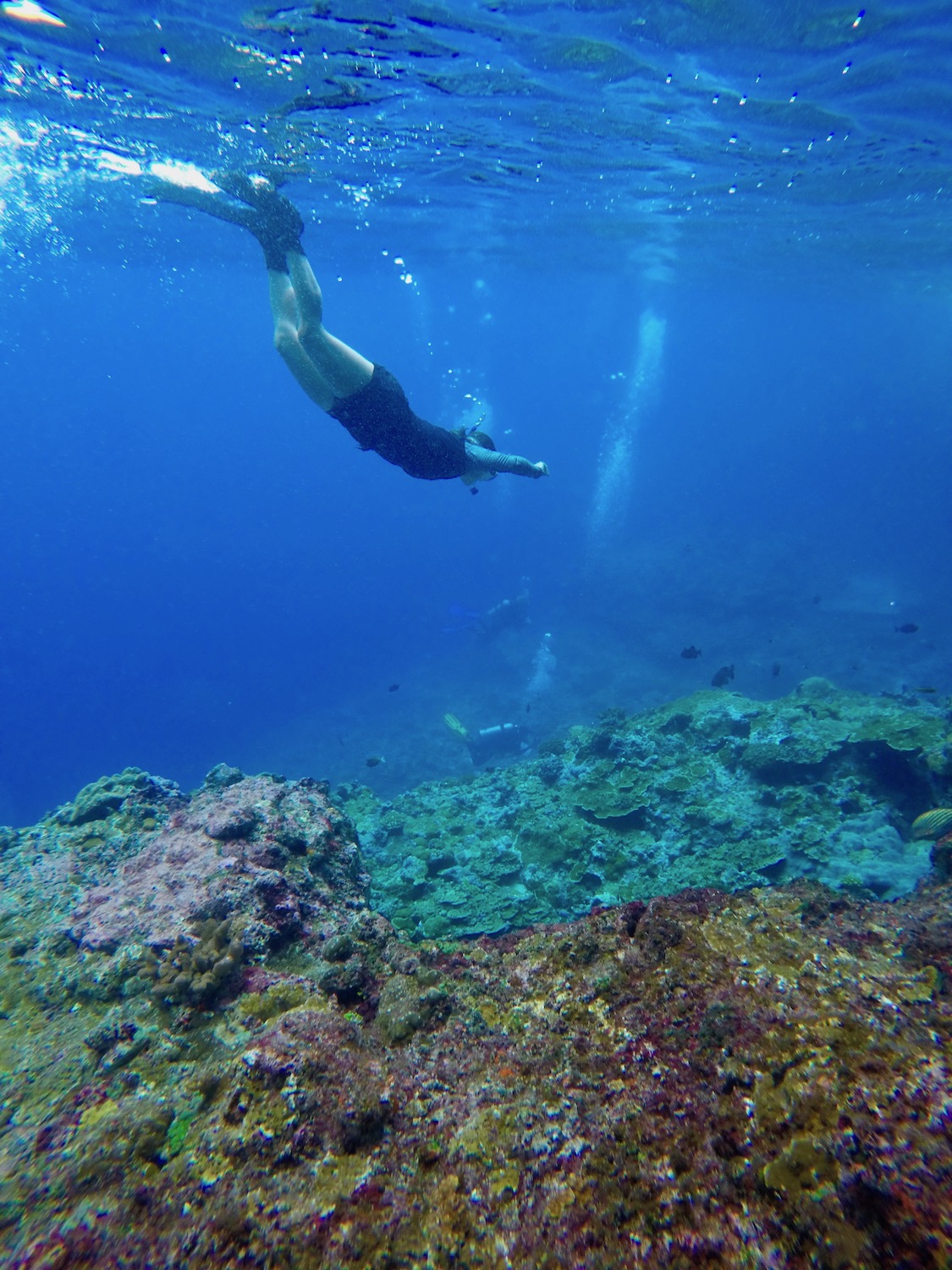By Jess Hargreaves
It started with the promise of three weeks research on a tropical island. Three weeks of sun, warmth and coral collection.
Near the end of October, it became a reality. Bright and early on October 23, a small team – which included Centre of Excellence for Climate Extremes Chief Investigator Assoc Prof Nerilie Abram and PhD student Jessica Hargreaves – headed out from Canberra to start the 14-hour journey to Christmas Island in the Indian Ocean.
We arrived to be greeted by a crowd of locals, mainly giant robber crabs!
The aim of the field trip was to locate and core a number of massive Porities Corals in the tropical Indian Ocean. These corals can be used as a proxy to investigate past sea-surface temperatures and rainfall. By understanding past changes in temperature and rainfall around the tropics, we can get an indication of future changes.
During this trip we were specifically on the lookout for Golden Coral – coral which had grown over 2m tall and around 4m in diameter but hadn’t been too badly eroded. Coral of this size allows researchers to determine climate conditions for the past 200-plus years. The cores are so precise that researchers can reconstruct climate for each fortnight over that period. Such detail can also help determine changes in the tropical rainfall belt over the period.
Our days of collecting coral consisted of a morning of roti canai, then a full day out on the boat with a local dive company and the National Parks team.
First, we would snorkel above the reefs, scouting for the best coral and always on the lookout for that ‘Golden Coral’. After that the diving began.
We were fortunate to have a dive team, also from ANU, on the trip who did all the hard work drilling coral after coral and then sent the beautiful samples back up to us.
We operated off the boat for hours at a time, with the drilling rig set up on the boat and the massive corals directly below us.
Over our entire trip we spent 14 days on the water, completed 36 dives, ate 64 roti canais, collected over 12 metres of coral, and reached our golden goal of a coral over 2 metres tall! The longest coral we collected was 2.73 meters, which we estimate is around 270 years old. Hopefully it will provide a beautiful record of Christmas Island climate.

Christmas Island is known for many things, however we believe it might also be one of the most underrated destinations around! It is a beautiful island, with attractions like blowholes, beautiful sunsets off South Point, stunning freshwater grotto caves and amazingly diverse ocean life.
We experienced dolphins swimming right next to us, hundreds of fish hanging around while we worked underwater, red-footed boobies and frigate birds who tried to steal our snorkels, robber crabs that loved eating our delicious dinners, and above all a GoPro eating giant trevally (hot tip: don’t throw GoPros to people in the water – the trevally will try to snack on your hands).
The trip was a great success, both scientifically, with all the corals collected, and through all the connections we made on Christmas Island. When we arrived back on the mainland, I’m sure everyone felt a small pang of longing for the beautiful island. But that was before the excitement about the research took over, with our coral cores likely to reveal 200 years of changes that took place around the island!

